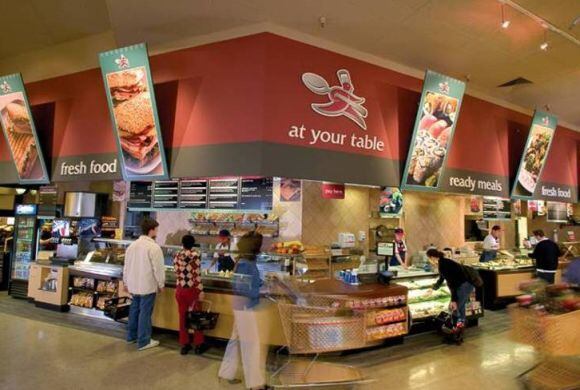The “Nutrition Labeling of Standard Menu Items at Chain Restaurants” provision in the ACA would require chain restaurants and similar retail food establishments with 20 or more locations to list calorie content information for standard menu items.
“This law was designed to regulate chain restaurants—that was the whole reason it was passed,” Erik Lieberman, regulatory counsel for FMI, told FoodNavigator-USA. “The restaurant industry called for it because states and municipalities had already passed a patchwork of regulations for chain restaurants. That wasn’t the focus of the legislation. There wasn’t concern that supermarkets weren’t providing enough. Over 95% of items we sell are already labeled pursuant to [the Nutrition Labeling and Education Act].”
Senate bill 1756 is a companion to House bill 1249, the Common Sense Nutrition Disclosure Act, which was introduced in March by Reps. Cathy McMorris Rodgers (R-WA), Loretta Sanchez (D-CA). It has garnered the support of the likes of FMI and the National Grocers Association, which argue that the cost of compliance for supermarkets would far exceed that of chain restaurants, as restaurants have uniform menus and suppliers, whereas supermarket cafe and deli menus change daily and often supply themselves.
“We don’t operate like restaurants, and that’s why states and municipalities don’t regulate us,” Lieberman said. “This is something people don’t really understand. Unlike restaurants, which source ingredients through a single distributor, supermarkets usually supply themselves, so the sources are much more variable. Secondly, it would be vastly more expensive for us to comply with this than for McDonald’s or Burger King because of the sheer number of items available at a supermarket. We continue to provide more voluntary nutritional information to consumers as well as the services of in-store nutritionists. A lot of that is going to go away if we have to deal with this.”
All outlets that serve food should be held to the same standard
In 2011, the Center for Science in the Public Interest, along with 80 other national, state and local organizations including the American Heart Association and American Public Health Association called on the FDA to adhere to the definition of restaurants and similar retail food establishments in the draft menu labeling guidance in its proposed regulation, which would include movie theaters, bowling alleys, stadiums, hotels, airlines and other outlets that serve food.

“We need to change the landscape in our country so that people being informed about what they’re consuming is commonplace,” Georges Benjamin, MD, executive director of APHA, told us. “If we narrow that to only include restaurants, it becomes a burden. We should make it commonplace so it’s expected of everyone—then consumers will be able to make informed decisions everywhere.”
CSPI also argues that as retailers have come to resemble restaurants in many ways, they should be held to the same standard.
“Supermarkets are acting more and more like restaurants, by having buffets, salad bars, sandwich counters, and seating areas. If Pizza Hut is required to disclose calories at its salad bar, it only makes sense that Whole Foods and Wegman's disclose calories at their salad bars,” Jeff Cronin, director of communications for CSPI, told FNU. “We support the law as passed in the ACA, which applies to restaurants and other similar retail food establishments.”
Last spring, CSPI conducted a survey of 38 retailers (supermarkets and one convenience store) to determine the feasibility of implementing calorie labeling for prepared foods in supermarkets and c-stores. CSPI found that 81% of retailers already have nutrition information available for some of their prepared foods, and 78% of supermarkets have registered dietitians on staff who could “easily calculate the calorie and other nutrient content of prepared foods.”
In addition, CSPI noted that as many supermarkets are already doing some nutrition analyses, they appear to have the necessary software. For chains that don’t, the cost of menu analysis software can be as low as $200, according to the Nutrition Co.

‘It’s not just software; investments required for retailers would be ‘very significant’
But Lieberman said that the regulation would entail upward of 1,000 items per store as opposed to the 60 or 70 in a typical restaurant, which would translate to tens of thousands of dollars invested into record-keeping systems.
“It’s not just about buying software. All of this is subject to criminal penalties under the Food Drug and Cosmetic Act, so many retailers are already looking into what they have to do to comply. The economists who did the preliminary impact analysis didn’t contemplate the fact that not only are foods for immediate consumption included, but also foods that are ready-to-eat but not sold for immediate consumption, like hummus and olives. This would involve investing tens of thousands, even hundreds of thousands of dollars to buy new software and overhaul record-keeping systems to track all the nutrient content in each recipe. Some retailers already have that information; it’s the record keeping that’s the real issue.”
Because of such overhauls, staff nutritionists will be relegated to the back office calculating nutrition facts, and supermarkets’ current investments in such voluntary efforts as the NuVal nutritional scoring system and front-of-pack labeling will be frustrated, he added.
Lieberman added that he thinks the bill has a good chance of passage, noting that the FDA would exceed its authority with such regulations. “All we’re doing is codifying in law what the FDA is proposing,” he said
But APHA and CSPI disagree. “Change is difficult and people don’t like regulation,” Dr. Benjamin said. “But they ought to think about it from a business perspective as well. It’s incongruent that companies implementing wellness programs meant to encourage employees to be healthier don’t want consumers to know what they’re eating.”
For more on menu labeling: Majority of Americans who read calorie info use it, though number is small
